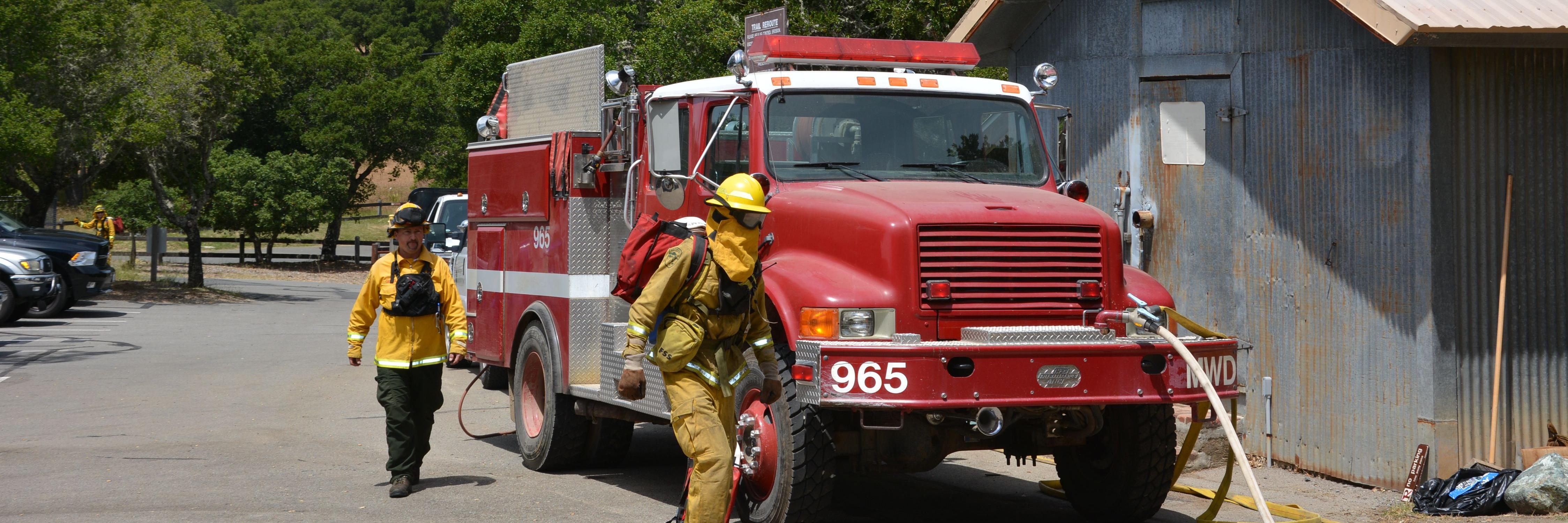24-Hour Water Emergencies
Ph: 415.945.1500
Marin Water’s core mission is explicitly focused on natural resource management, sustainability, and water supply reliability. Implicit in this mission statement is a guiding principle that water reliability is a fundamental element of the community; supporting the economy, ecology, and landscapes that make Marin a unique and desirable place to live.
As the community we serve contends with potential natural disasters, the district recognizes we have a responsibility and role to play; we have a duty to protect the community we serve by preparing for and mitigating against wildfire. District staff developed this Wildfire Resilience Plan (WRP) to summarize existing district programs and operations related to wildfire preparedness, identify data gaps, and develop recommended actions that will lead to a more wildfire resilient and reliable water system that protects communities throughout the service area.
To learn more, click on Draft Wildfire Resilience Plan 2020. The final Plan will be a living document; updated periodically to address changing conditions and the evolution of wildfire resiliency best practices.
 Translate
Translate